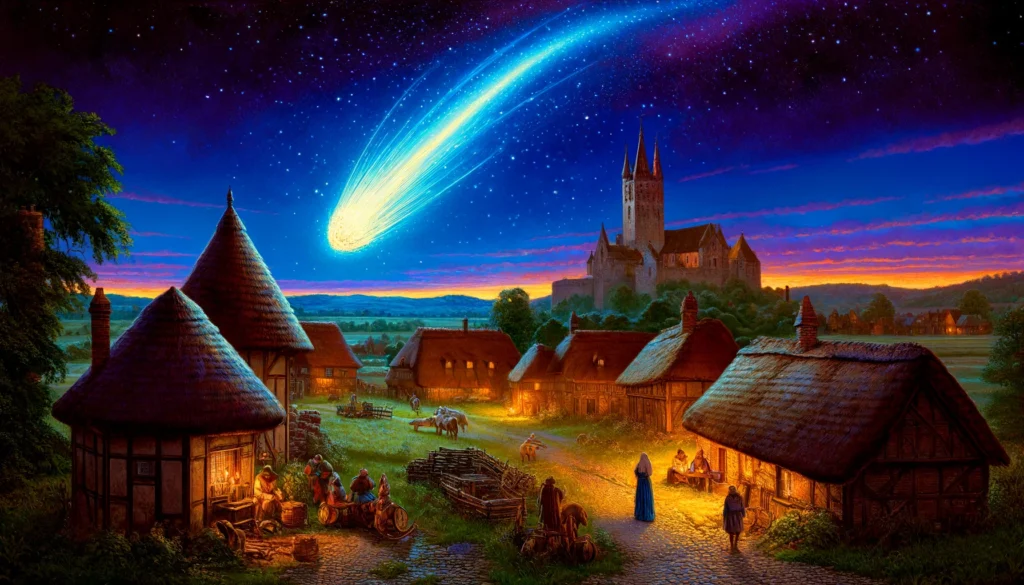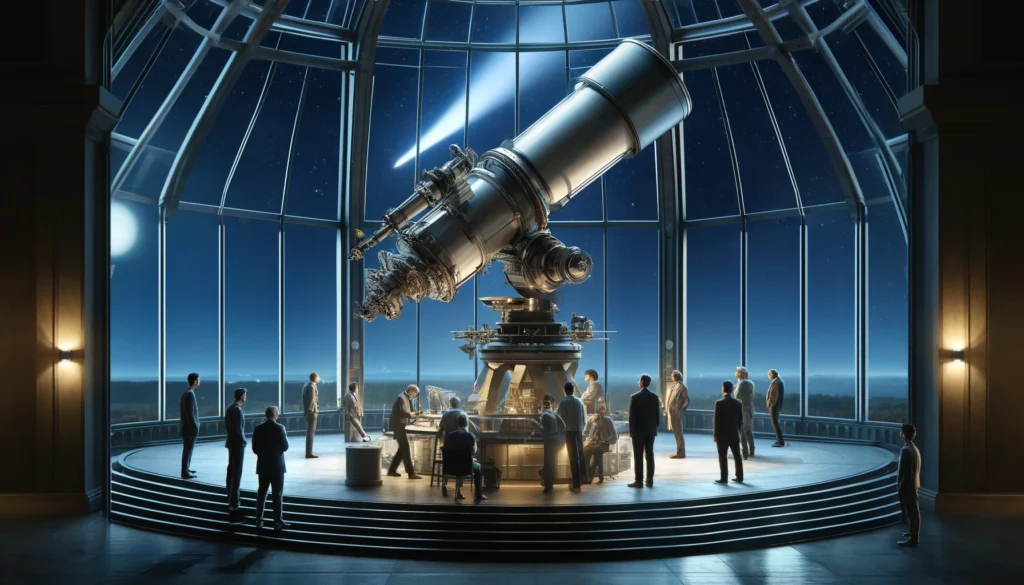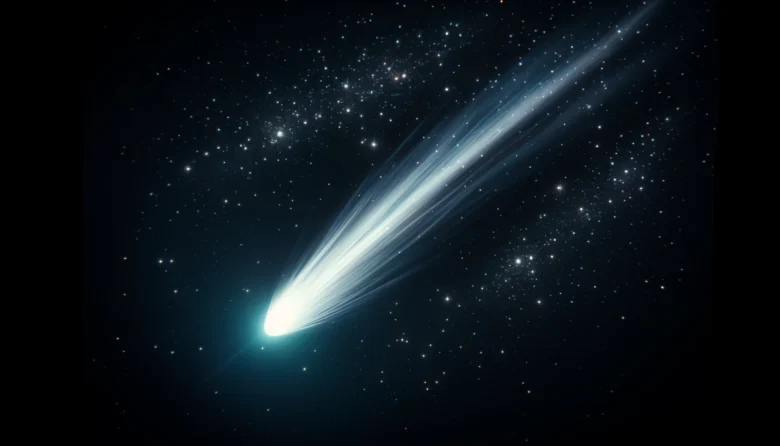Halley’s Comet, a celestial wanderer, has fascinated humanity for centuries. On this day, 11th April, back in 1986, it made its closest approach to Earth on its outbound journey, coming within 63 million kilometers (39 million miles). However, to the dismay of many, it barely made a twinkle in our night sky. This event, while underwhelming for some, is a part of the comet’s long and storied history, connecting us with generations past and sparking curiosity about future visits.
The 1986 Encounter
On its last visit in 1986, Halley’s Comet came within 63 million kilometers (39 million miles) of Earth. Despite the excitement, the comet was not the brilliant spectacle many had hoped for, appearing as a faint smudge to the naked eye. This subdued showing stood in stark contrast to the comet’s past appearances, leaving some skywatchers feeling shortchanged by the cosmic spectacle.
A Glimpse into History
The comet’s 1986 appearance pales in comparison to its dramatic visit in 1066 when it was so bright that it terrified millions across Europe. Recorded in the Bayeux Tapestry, this event left a lasting mark on history. Halley’s Comet has been a consistent presence throughout human civilization, mentioned in ancient texts and observed by astronomers across the ages. Each appearance of Halley’s Comet weaves a new thread into the fabric of our shared history, reminding us of the Comet’s timeless allure.

Understanding Halley’s Comet
Halley’s Comet, officially known as 1P/Halley, is a ball of ice and dust that orbits the sun every 76 years. Its name honors Edmond Halley, the astronomer who first computed its orbit and accurately predicted its return in 1758, after his death. The comet’s origins trace back to the Oort Cloud, a distant area of our solar system filled with icy objects.
This cosmic relic from the solar system’s formation over 4.6 billion years ago has been visiting Earth’s vicinity for millennia, providing a tangible link to the early solar system. Its journeys through our solar system have been chronicled since 240 BC, but it was only in 1705 that Halley calculated its orbit, predicting its return and lending it his name. The comet’s closest approach to Earth occurred in AD 837, at a distance of about 3 million miles. Its periodic visits are not just spectacular shows but also valuable chances for scientists to study a primordial piece of the solar system.
Anticipating 2061
Looking ahead, Halley’s Comet is set to return in 2061, and the anticipation is already building. This upcoming visit presents an opportunity for advancements in technology to provide unprecedented views and scientific data. Astronomers and the public alike are eager to see whether the comet will reveal more secrets and offer a spectacle that rivals the great appearances of the past.

Conclusion
Halley’s Comet is more than just a celestial body passing through; it’s a bridge connecting past, present, and future generations. Its cyclical nature reminds us of the enduring human fascination with the cosmos and our perpetual quest for understanding. As we await its next appearance, Halley’s Comet remains a symbol of the mysteries and wonders of our universe, continually reigniting our collective imagination.
In this journey through time, Halley’s Comet illustrates the rich tapestry of human experience, marked by moments of awe and curiosity. As it continues to orbit through the millennia, it serves as a cosmic beacon, reminding us of the vast and beautiful universe we are part of.
Author’s Note
Thank you for joining me on this celestial journey through time with Halley’s Comet. This blog aims to shed light on the comet’s historical significance, scientific value, and cultural impact, inspiring curiosity and wonder about the universe we inhabit. I hope it enriches your understanding and appreciation of this astronomical marvel.
G.C., Ecosociosphere contributor.
References and Further Reading




